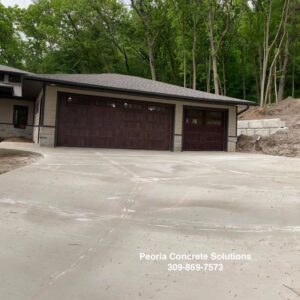Concrete driveways are one of the structures that are most prone to wearing, tearing, and getting damaged, after all, they are exposed to most harsh weather conditions, whenever, it gets hot, rainy, or cold, they are still battling outside. Additionally, they are also frequently used, which is worse if your concrete driveway accommodates heavy vehicles.
If you frequently use your concrete driveway, then a cracked or crumbling concrete driveway becomes really troubling and problematic. It is always best to deal with these problems even when it is still not much of a big issue as it will be easier and can prevent bigger damages, at least, for now. Apart from safety and efficiency, it is also important to fix these concrete driveway cracks to improve both your home value and experience.
Working With Resurfaces
When you’re only dealing with crumbling concrete, using concrete resurfacing products should be enough. In any case, spalling, a type of concrete damage often occurs in concrete that was poured too wet at installation, however, there are also other such factors like prolonged snow exposure, repeated use of chemical ice-melting products, or persistent dripping of water in one place that can also cause this type of concrete surface damage.

Although spalling typically does not cause any serious and severe structural damage with concrete driveways, they are still quite an eyesore that makes the surface unappealing. There are numerous resurfacing products you can try and use in order to smoothen the rough, damaged surface. Of course, you’re free to choose whatever you would like, but it is still important to choose the best products as certain company products have special additives that give them extra strength and durability.
As a resurfacing tip, it is best to divide large driveways into smaller areas, doing so, you can work on the concrete driveway one section at a time. This will also make it easier to apply and control the resurfacing product, perfect for amateur work. You should also start cleaning the existing surface with a power washer, then mix the resurfacing product using a heavy-duty drill and paddle bit, then spread it on evenly with a long-handled squeegee.
Using Concrete Patchings
You can also use patching concrete products when dealing with crumbling or chipped concrete surfaces. Concrete patching products make a tough, durable bond with the existing concrete and evens out the surface. If you’re doing it by yourself, it is best to watch a video about it. Basically, you can spread it over clean and sound-chipped surfaces to a thickness of ¼ inch.

Also, its smooth consistency makes it easy to feather out with a trowel and blend with the rest of the step’s surface. If your patch is thicker, build the concrete patcher up in ¼ inch applications. You can contact professionals or at least ask for help since some special instances may require special care. Remember that if you’re making repairs shallower than one inch, adding the acrylic fortifier to the quick-setting cement will increase the bonding strength.
Related: Do I Need A Driveway Repair?
Other Repair Methods For Driveway Damages
In the end, it is best recommended to have a professional Peoria concrete company inspect the driveway, that is because perhaps the damage you think your worn-out driveway has may not just be simple crumbling. For example, expansion joints are set in large expanses of concrete to prevent the surface from developing cracks as sections shift imperceptibly over time as a result of temperature fluctuations or soil movement.
However, these joints were never sealed, or if the old sealer has since hardened, crumbled, or pulled away from the concrete in spots, the joints cannot do their jobs. In such cases, it is best to remove the older type of sealant installed, clean up the joints, and apply a new sealant.

